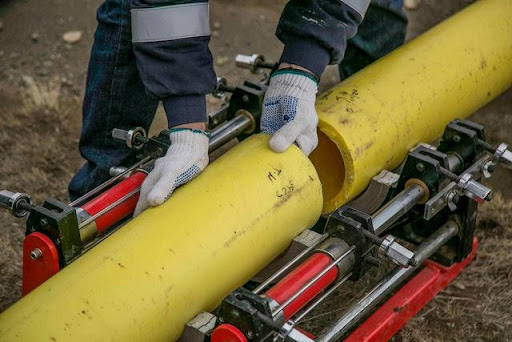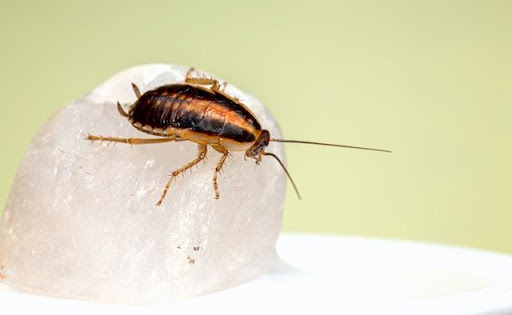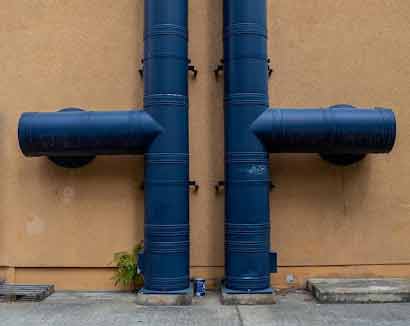
Of all the home maintenance horrors, there’s something particularly unsavory about a leaking sewer line. It’s not just the mess – it’s the unpredictability, the potential for backyard excavation, and the fact that no one wants to say, “I think my sewer line’s backed up”, breaking the silence at a dinner party. (Though, in Chicago, with its lake-effect snow and skyscraper views, maybe you’d get some sympathetic nods.) But, before you start imagining scenes from your personal worst-case disaster movie, there are, thankfully, several sewer line replacement warning signs you can keep an eye out for.
Nobody wants to be surprised by a basement flood that smells suspiciously worse than the rain, or by water that just, well… won’t… go… away. It’s avoidable if you’re vigilant, and today we’re going to explore how to spot the warning signs before the whole thing spirals into a plumbing nightmare of epic proportions.
What is a sewer line?
Ah, the sewer line: the uncelebrated hero of your home’s plumbing system. It’s the thing quietly taking care of business every single day without so much as a single, honest thank-you. Think of it as a long, winding road that carries waste from your home to the municipal sewer system. Every time you flush the toilet, take a shower, wash your dishes, etc., the waste is transported via your sewer line to some far-off, underappreciated destination where it’s treated and disposed of properly.
Warning signs you’ll want to keep an eye (or nose) on
Like all hardworking things, your sewer line can get tired, worn out, or clogged, usually at the worst possible time (and it’s always the worst possible time). Given its crucial role in maintaining your home’s sanitation and safety, this unsung plumbing highway deserves a bit of attention every now and again.
The odor-ific situation
Imagine this: you’re enjoying a rare, relaxing Sunday, and then you smell something… off. It’s not Saturday night’s leftovers but something more sinister. If you’ve got standing water hanging out in your yard or basement, and it smells like, well, sewage, that’s not a mystery you should leave unsolved. Standing water that reeks of waste is one of the most obvious warning signs of a sewer line problem.
Your sewer line may have a leak or a clog. This can cause unpleasant fluids to rise to the surface. Don’t light a candle and ignore it – call a professional. The water’s not going to dissipate overnight, and neither will that smell. In a place like Chicago, where the combination of cold winters and erratic plumbing can make problems worse, staying ahead of this one is key.
Time heals everything (except your sewer line)
We all love the idea that time heals all wounds, but, unfortunately, this is one of those adages that doesn’t apply to your sewer line. Like, at all. Sewer lines wear out over time, particularly if your home is, shall we say, “experienced.” As your pipes age, they can corrode, crack, or collapse. The passage of time, while generally wise and calming in other areas of life, is downright destructive for plumbing.
Now, let’s say you’re moving to a new city – maybe you’re trading in New Hampshire’s snowy peaks for the bustling streets of Chicago. One word of advice from the guys and gals over at Michael Brooks Moving? Ask about having a sewer line camera inspection performed before you sign the dotted line. No one wants to deal with this mess the week after an interstate relocation.
You’ve noticed something’s off with your water bill
Has your water bill been creeping up for no apparent reason? You’re not suddenly watering a golf course, but your utility bill seems to think otherwise. A sudden spike in your water bill can be a sign of an unseen sewer line leak. Leaks, particularly ones underground, can cause water to escape from the system before it reaches your drains and faucets. The water that’s not making its way to you is, of course, being billed all the same. If your water bill is acting a bit suspicious, don’t just shake your head and assume the water company’s plotting against you.

If your water bill is acting a bit suspicious, don’t just shake your head and assume the water company’s plotting against you.
Drains: the case of unexplained noises
You’ve probably seen this scene in movies or haunted-house flicks: the drain suddenly starts to make an eerie gurgling sound (as if something deep below is trying to claw its way back up and make friends with everyone).
That noise is air bubbles, trapped by a blockage or a break in your sewer line, struggling to escape, an indicator of something larger. Left unchecked, this could spell trouble. So, if your sink, toilet, or bathtub is having vocalizations, call a plumber before things get louder.
Bugs, mice, and everything (not) nice
Sure, sewer lines are gross (as one can imagine). They’re a natural gathering spot for things we don’t really want to think about – like bugs, or rodents. But if you’re suddenly noticing more unwelcome guests in your home (bugs, mice, etc.), it could be a sign that your sewer line is cracked or broken. These critters, ever the opportunists, will use the cracks in the pipes as their personal highway into your lovely home. No, thank you, but no.
The green menace: tree roots invading your pipes
Trees are beautiful and provide shade on a sunny day, but when it comes to sewer lines, they’re more trouble than you’d think. Tree roots can be sneaky. They’re drawn to the moisture that leaks from sewer pipes and will gradually invade the space, causing blockages or full-on pipe collapses which in turn can cause the need for a sewer line repair.
While you may love that giant oak tree in your yard, if it’s anywhere near your sewer line, consider getting regular checkups to ensure it’s not doing serious damage underground. A small root can grow into a big problem if left unchecked.
Conclusion
Your home’s sewer line is one of those underappreciated systems that only gets noticed when something goes terribly wrong. The good news is that by keeping an eye out for sewer line replacement warning signs – like standing water, strange noises, higher water bills, and those pesky tree roots – you can prevent disaster before it strikes.
Chicago’s known for many things – deep-dish pizza, windy streets, and, yes, occasional plumbing challenges, especially during wintertime. Whether you’re already settled or just moving in, a proactive check on your sewer system will save you money and stress and, most importantly, keep your home’s infrastructure running smoothly. After all, it’s better to know what’s beneath the surface before it makes itself known in a very messy way.


